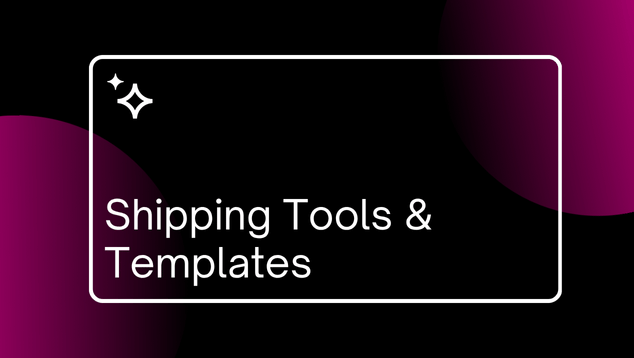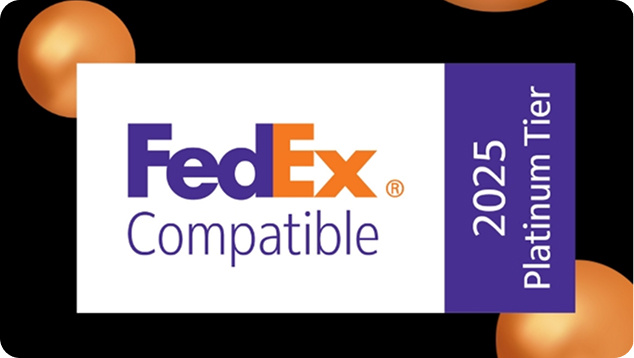Why digital transport documentation isn't what you think: myths vs reality
 Paper documentation still dominates 40% of all trade transactions in shipping, despite our digital age. The transport industry continues to struggle with shipment cancellations, administrative overhead and expensive delays due to this reliance on physical paperwork.
Paper documentation still dominates 40% of all trade transactions in shipping, despite our digital age. The transport industry continues to struggle with shipment cancellations, administrative overhead and expensive delays due to this reliance on physical paperwork.
Digital transport documentation has started to change everything. The numbers tell a compelling story - companies can slash investment costs by over 200% and save roughly 40% of capital when they switch from traditional methods to digital solutions. Your transport operations stand to gain from up-to-the-minute shipment tracking, tamper-proof digital records and optimised invoice processing. The e-CMR protocol will become mandatory for all EU countries in 2026, which shows how the industry moves toward paperless operations.
This piece separates truth from myths about digital transport documentation and shows how it affects security, compliance and operational efficiency. You'll find why old beliefs about digital solutions might limit your business growth and what these changes mean for your future operations.
The Current State of Digital Transport Documents
The digital world of transport documentation shows uneven adoption rates in various regions and industries. Less than 1% of freight transport operations in the EU use completely paperless systems. This shows we have a long way to go in digital adoption.
Global Adoption Rates
Digital transport documents have gained different levels of acceptance worldwide, with some regions seeing soaring wins. The airline industry's electronic airway bills jumped from minimal usage to more than 50% adoption between 2012 and 2017. Maritime shipping has made progress too, with electronic bills of lading now making up about 1% of all transactions.
Regional Variations
Each region shows its own unique pattern in adopting these digital solutions:
- Netherlands and New Zealand stand at the top with 96% overall trade digitalization rates
- Singapore and South Korea reach 93% in South-East and East Asia
- Saudi Arabia leads the Middle East and North Africa at 91%
- India tops South Asia with an 87% implementation rate
Industry Standards and Protocols
Standards are the foundations of ensuring systems work together smoothly. The United Nations Centre for Trade Facilitation and Electronic Business (UN/CEFACT) maintains the only global standard for electronic data interchange - UN/EDIFACT. This framework helps process hundreds of millions worth of trade transactions globally. The European Union uses UN/CEFACT standards as their main reference to implement the EU 2020/1056 Regulation on Electronic Freight Transport Information.
The Digital Standards Initiative (DSI) has broadened its recommendations to cover 14 key trade documents that span transport, logistics, finance, and payment processes. These standards want to create continuous connection and compatibility between different systems and regions.
Hidden costs of paper documentation
Paper-based transport documentation comes with hefty hidden costs that go way beyond the reach and influence of simple operational expenses. A typical shipment needs up to 50 sheets of paper exchanged between 30 different stakeholders. This creates a complex web of expenses that affects the bottom line.
Administrative overhead
Manual documentation drains valuable time and resources. Transport operators dedicate roughly 104 days each year to manual planning and scheduling. Paper trade documents take anywhere from 4 hours to 7 days to process. Digital processing gets the job done in just 10 minutes. Staff members spend 21 days reviewing documents and waste another 6 days looking for lost files yearly.
Error-related expenses
The transport sector loses significant money due to document errors. Here's what the numbers tell us:
- Each misfiled document costs £95.30
- Document reproduction runs up to £174.72 per sheet
- Invoice errors cause rejection rates of 15-66%, leading to £555.91 million in yearly industry losses
Opportunity costs
Manual documentation's inefficiencies slow down business growth and limit operational capacity. Old transport systems see up to 40% less operational capacity. This means they can't handle more bookings or scale their services well. Manual processes drive up administrative costs by 25%. The Digital Container Shipping Association shows that paper documentation costs triple that of digital options. The situation gets worse with trade finance. Paper processes limit access to funding, as 92% of banks confirmed in an International Chamber of Commerce survey.
Security and compliance realities
Security in transport documentation goes beyond basic document protection. Electronic systems provide better protection than traditional methods, contrary to common perceptions about digital transport documentation vulnerability.
Digital vs physical security
Electronic transport documents create multiple protection layers through encryption and access controls. Physical documents depend on locks and barriers, while digital systems use advanced authentication measures. The Electronic Communications Security Measures Regulations require specific security protocols. Service providers who don't comply face fines up to 10% of turnover.
Regulatory requirements
The European Union's eFTI regulation sets strict guidelines for digital transport documentation. Service providers must follow these rules:
- Data processing happens only through authorised users
- Information stays available as per EU and national laws
- Competent authorities get immediate access without fees
- Data protection measures prevent unauthorised access
Audit trail benefits
Digital audit trails make documents more authentic and trustworthy. These trails capture key details about document selection, authorisation, scanning, delivery, and verification processes. The audit system logs user information automatically when someone handles sensitive data. This helps businesses detect and minimise internal fraud.
Organisations can verify transaction accuracy and check material figures quickly through detailed tracking. Digital audit trails spot document changes fast, unlike manual verification. Time-stamped records serve as legal evidence. This approach cuts fraud risk and maintains proper access control throughout the document's life cycle.
Future-proofing your documentation system
A reliable digital transport documentation system needs to adapt to future tech advances and growth needs. The system's architecture should have quick data storage and retrieval structures that work with live analysis capabilities.
Scalability considerations
Today's transport documentation systems need adaptable data integration services. These systems should handle large amounts of different data types quickly. Cloud solutions make scaling much easier. Companies don't need complex hardware and can grow without replacing their systems.
Integration capabilities
The success of integration depends on platforms with reliable API features that work well with existing Transportation Management Systems (TMS) and Enterprise Resource Planning (ERP) solutions. The system's architecture needs standard communication between components and focuses on smooth interface connections.
Emerging technologies
The transport sector has seen the biggest increase in digital disruption risk. Several key technologies now shape digital documentation's future:
- Artificial Intelligence: AI helps make analytical decisions when planning transport infrastructure and services. This technology powers predictive analytics and makes decision-making better through simulation models.
- Internet of Things: IoT use in transport has grown by a lot. There were 22 billion connected devices in 2018, and this number will double in the next decade. These devices work as sensors and provide live updates about themselves and their surroundings.
- Cloud Computing: The move to cloud solutions has become common, with Location-Based Services growing at 30% CAGR. This gives live visibility across supply chains - crucial for handling increased uncertainty in multimodal environments.
The system's architecture must support ongoing improvements as service needs change. Quality features like compatibility, extendibility, interoperability, and standardisation become crucial to long-term success.
Conclusion
Digital transport documentation is a vital advancement that revolutionises modern shipping operations. It delivers benefits that go well beyond replacing paper. These solutions make use of proven security measures, complete audit trails, and uninterrupted integration capabilities to tackle problems that traditional documentation methods don't deal very well with.
The numbers tell a compelling story about going digital. Your business can cut investment costs by 200% and save 40% in capital compared to paper systems. The benefits go further - you'll save 104 days each year previously spent on manual work. The industry will also avoid £555.91 million in losses caused by invoice errors.
Security has evolved from a concern into a major advantage of digital documentation. Better protection than physical documents comes through advanced encryption, strict access controls, and automated audit trails. These features ensure you comply with eFTI and other regulatory standards.
The future looks promising with flexible digital documentation systems powered by AI, IoT, and cloud computing. These technologies are the foundations of competitive operations. Your transport operations will benefit from live tracking, informed decisions, and smooth integration with existing business systems. This prepares you for growth and technological progress.
Moving from paper to digital documentation isn't just another trend. It brings a radical alteration in transport efficiency, security, and compliance. Your business's success depends on embracing these digital solutions, especially when you have mandatory requirements like the e-CMR protocol coming in 2026.
ShippyPro is the complete shipping software for online and offline retail. With Label Creator, Track & Trace, Easy Return and Analytics features, our software simplifies your shipping operations. ShippyPro integrates with over 180 carriers and 80 sales channels, making it compatible with a wide range of products and use cases.













